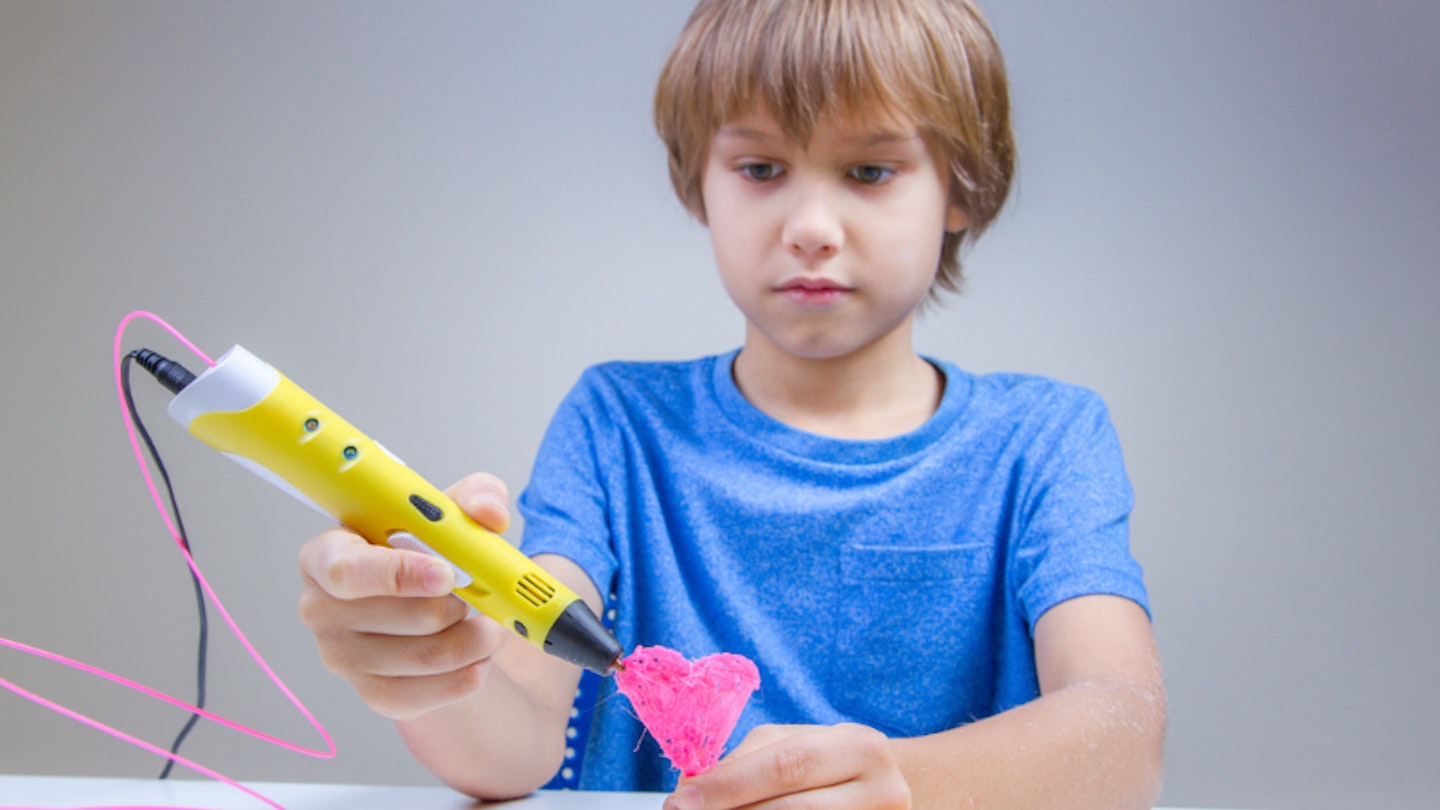If your little one loves drawing, or crafting activities, then a 3D pen could be just the thing for them. Not only will it stimulate their imagination and creativity, but they will be fascinated as their drawings become something tangible they can hold and feel.
There are so many tech gadgets on the market for kids including tablets, video games, kids EarPods, and even devices like the Toniebox, it's hard to keep up. They are all extremely beneficial for both educational reasons and also to develop your little one's creative side, and a 3D pen will take their colouring and drawing to another level. Plus, if you want to manage your child's screen time then using a 3D pen is a great activity which doesn't include a screen.
What is a 3D pen?
A 3D pen looks like a slightly chunky version of a normal pen, but you feed hard plastic filaments through the pen which are then melted, like how a glue gun works, and exit the nozzle of the pen malleable and ready to be used to create a 3D design. The plastic quickly cools and your little one will have a solid structure. It is a fun, alternative to making playdough, colouring and other craft activities.
Best 3D pens for kids at a glance:
•Best starter 3D pen for kids: 3Doodler Start+Essentials Pen Set
•Best wireless 3D pen for kids:myFirst 3dPen Make
•Best 3D pen for kids gift set: 3D Pen with digital display
•Best lightweight 3D pen for kids: PIKA3D super printing pen
While 3D pens are popular with adults, used both professionally and for leisure, they are great for kids too. They will help develop hand eye coordination and fine motor skills, as well as inspire their imagination. In fact, using a 3D pen is a lovely way to spend time with your little one, without the inevitable mess paint or clay creates, and the perfect activity to do indoors on a chilly winter afternoon.
Best 3D pens for kids 2024
Best starter 3D pen for kids

uk.the3doodler.com
The 3Doodler Start+ 3D pen extrudes BPA-free plastic that quickly hardens so they can create solid structures. It is safe to touch with no hot parts, or sticky glue. It is simple to use with just the press of a button for hours of creative fun.
Reviewer, Michelle, said: "Brilliant, my 7 year old can use easily unsupervised and has made some amazing 3d models using the templates. Well worth the money."
Pros
- No hot parts
- Simple to use
Cons
- Some reviewers reported the nozzle got clogged
| Power supply: | USB cable |
| Playtime per charge: | Up to 1 hour |
| Suitable for: | 6 years + |
- Plastic hardens rapidly
- Not hot parts
- Up to an hour of playtime
- Doodle on almost any material without damage
- Charge time 35-40 mins
- Includes: 72 Strands of 3Doodler Start+ Refills and an activity guide
Best wireless 3D pen for kids
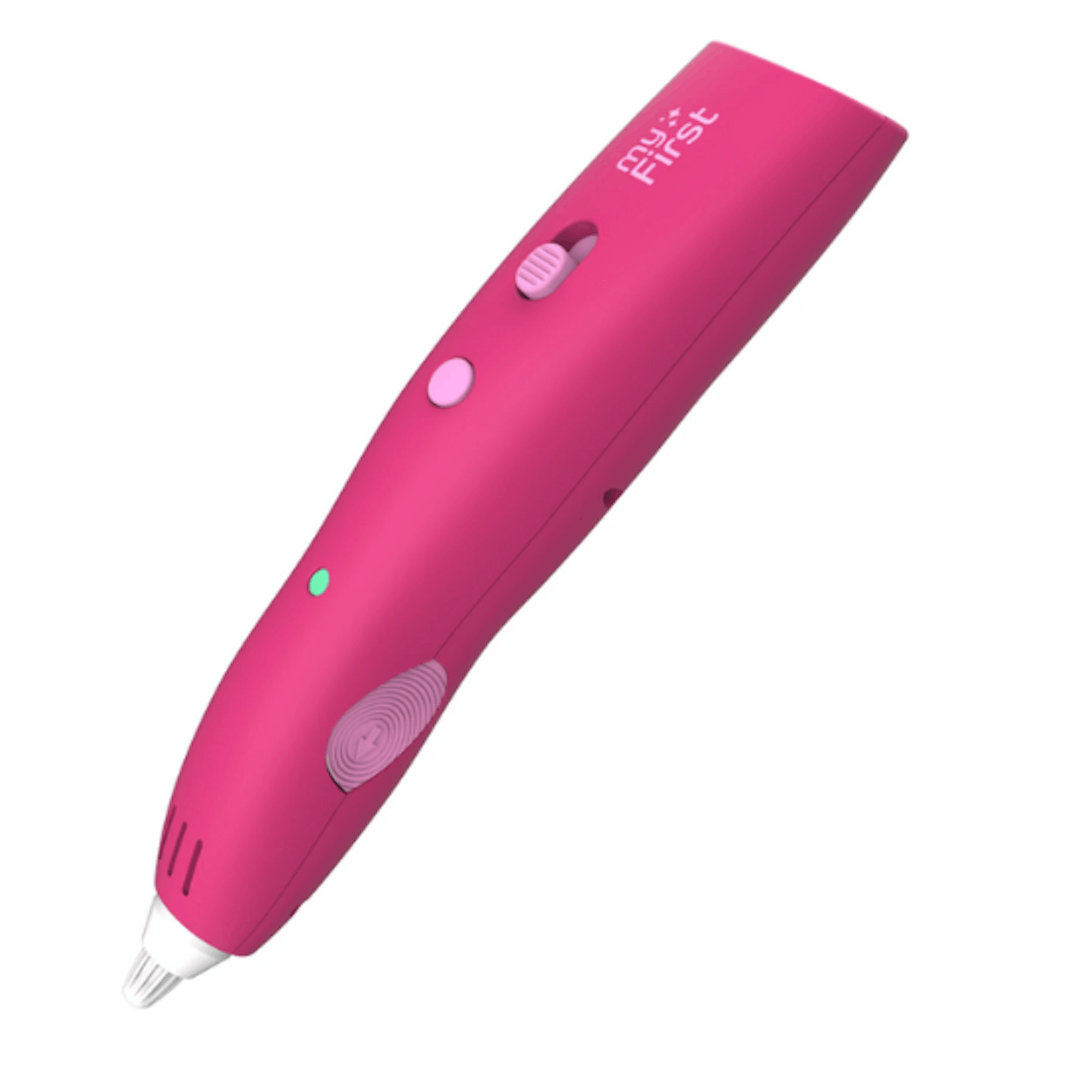
uk.myfirst.tech
This fun 3D pen is wireless so will give your little one more freedom to create. It also boasts an inbuilt battery for convenient USB charging. Kids will love watching their creations take form, plus it is safe to touch because the inner device's heat is hidden away inside. When the fun is over, it's easy to tidy away because it's non-adhesive so the filaments won't get stuck to anything.
Laura, Commercial Content Writer for Mother & Baby, commented: "My seven year old daughter loves this pen. She was able to use it straight away, and followed the design to make a miniature Eiffel Tower, which she is incredibly proud of. It is simple to change colours and while the nib does get warm, it never gets burning and is not dangerous for children to use. The battery does need regular recharging but lasts long enough for a seven year old's attention span. My four year old daughter wanted to try as well and it was trickier for her because she wanted to press down on the mat like you would with a colouring pen, but she was able to easily create shapes and turn it on and off with a bit off help. For both girls it has been great fun and most importantly, held their attention and they loved using their imagination to create shapes and 3D drawings, including trying to make 3D creations of me, my husband and the cats!"
Pros
- Wireless and USB charging
- Safe to touch
Cons
- Filaments for pen need to be purchased separately
| Power supply: | USB rechargeable |
| Product weight: | 46g |
| Warranty: | 1 year |
| Suitable for: | 5 - 13 years |
- Safe to touch
- USB rechargeable
- Filaments made from PCL
- Non-adehesive
Best value 3D pen for kids
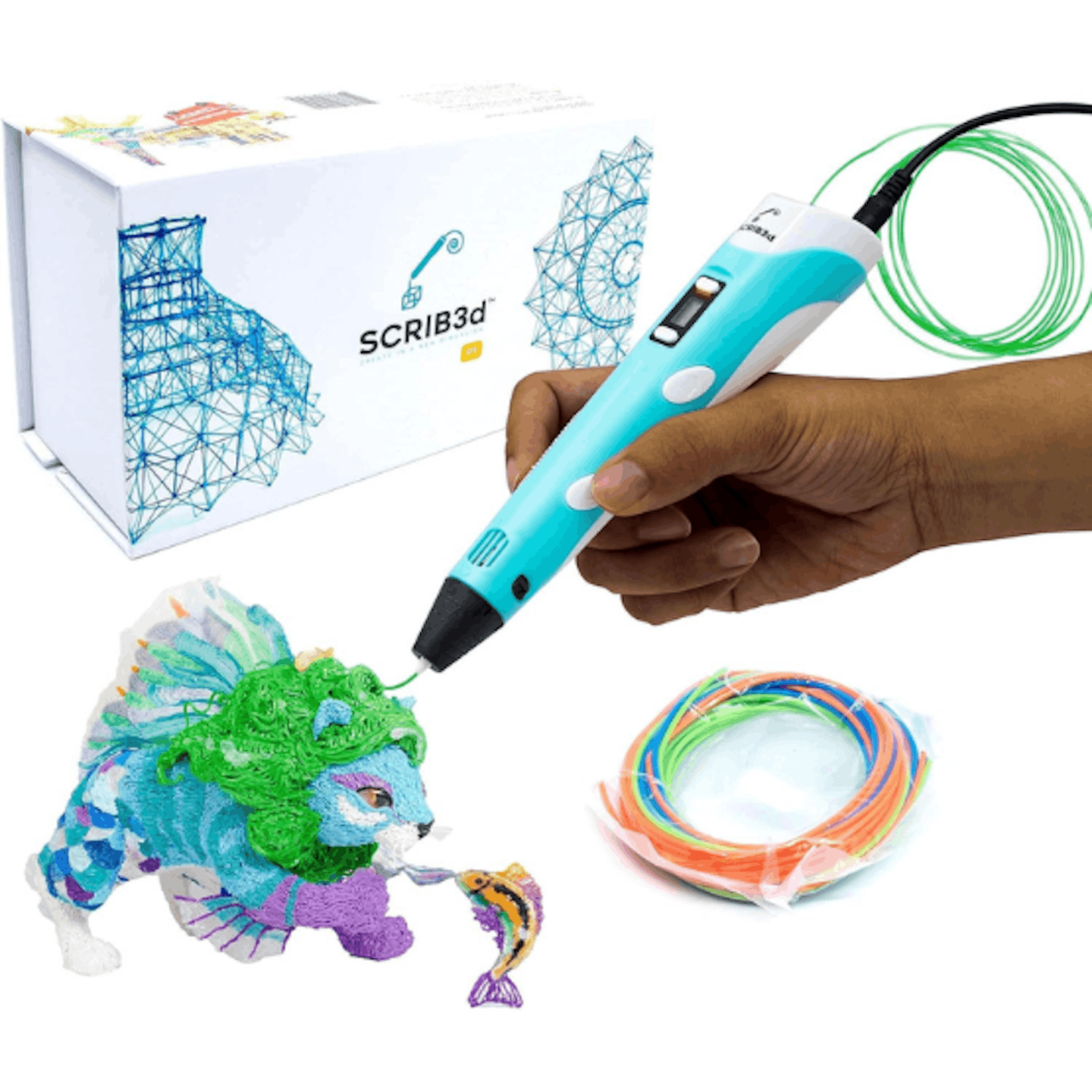
This great value 3D pen includes 3 colours of PLA plastic to start you doodling, as well as a step-by-step manual, and a stencil guide. The SCRIB3d is temperature adjustable to accommodate different types of filament. With a ceramic nozzle it ensures safety and performance without clogging, plus it has a 2 minute auto sleep function.
One reviewer said: "Bought as a present for an arty teenager. Clear instructions and easy to use which sparked their imagination and was a nice change from gaming. Some interesting creations but now asking for a 3D printer!"
Pros
- Auto sleep function
- Includes 3 coloured filaments
Cons
- Needs to be plugged in while in use
| Suitable for: | 14 years + |
| Weight: | 14.39 ounces |
| Warranty: | 1 year |
- 2-3 minutes to heat up
- Includes 3 coloured filaments
- Two temperature settings
- Auto sleep function
Best 3D kids pen for intricate designs
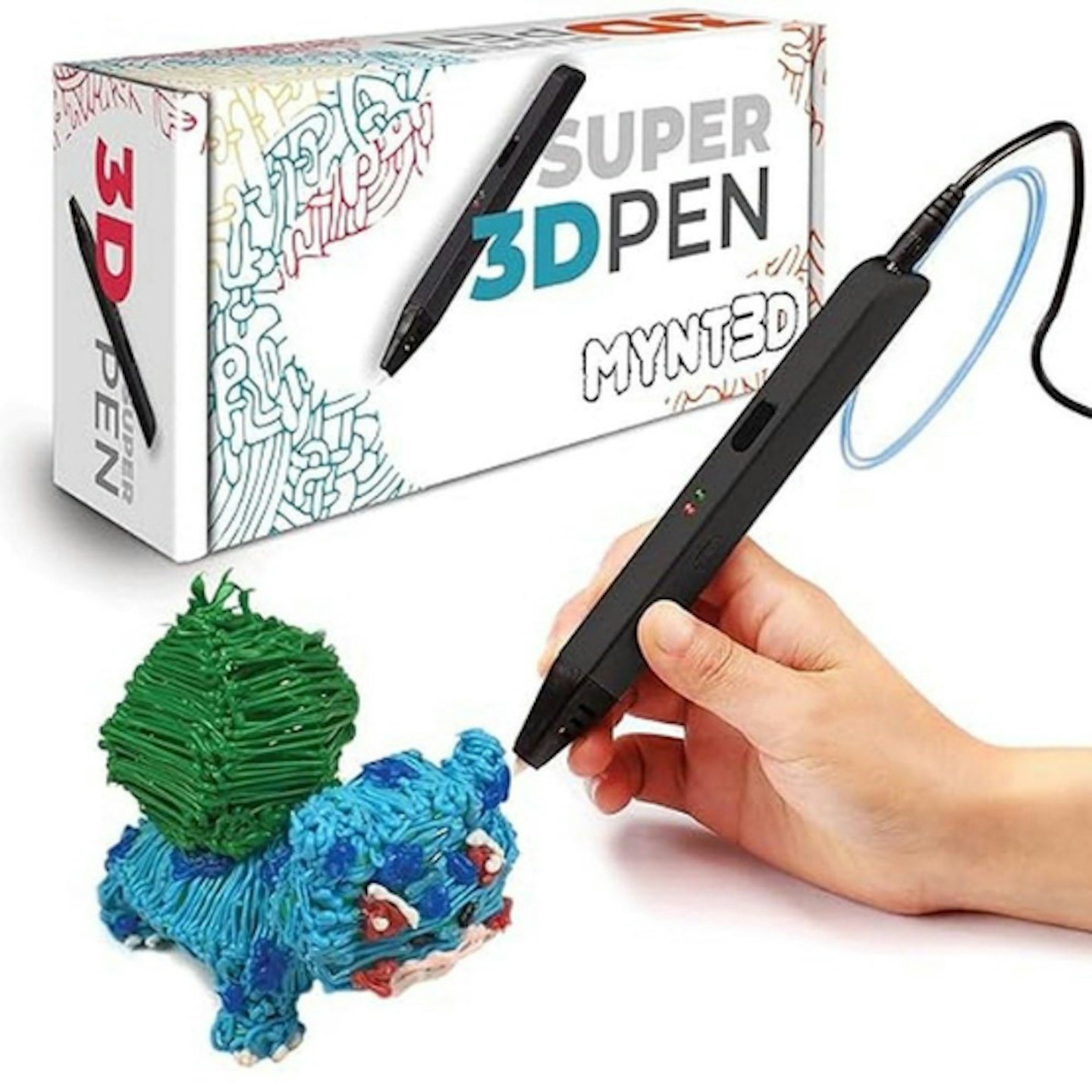
Your little one will love turning their drawings into 3D artworks with this pen. It has a speed slider which allows you to regulate the flow to improve control during your drawing, which is great for intricate designs. Plus, it has an ultrasonic waterproof nozzle which is clog-proof. The kit includes 3 colours of ABS plastic filament and an A/C adapter.
Jean, a reviewer, said: "Setup very easy - Kids didn’t find anything hard to make it work. Played for hours following their creativity, without occurrence of mishaps, malfunction. A winner for both kids & parents."
Pros
- Clog proof nozzle
- Can regulate flow for added control
Cons
- Not the easiest to hold
| Suitable for: | Not stated |
| Weight: | 220g |
| Warranty: | 1 year |
- Waterproof, clog proof nozzle
- Speed slider setting
- Includes 3 plastic filaments
Best lightweight 3D pen for kids
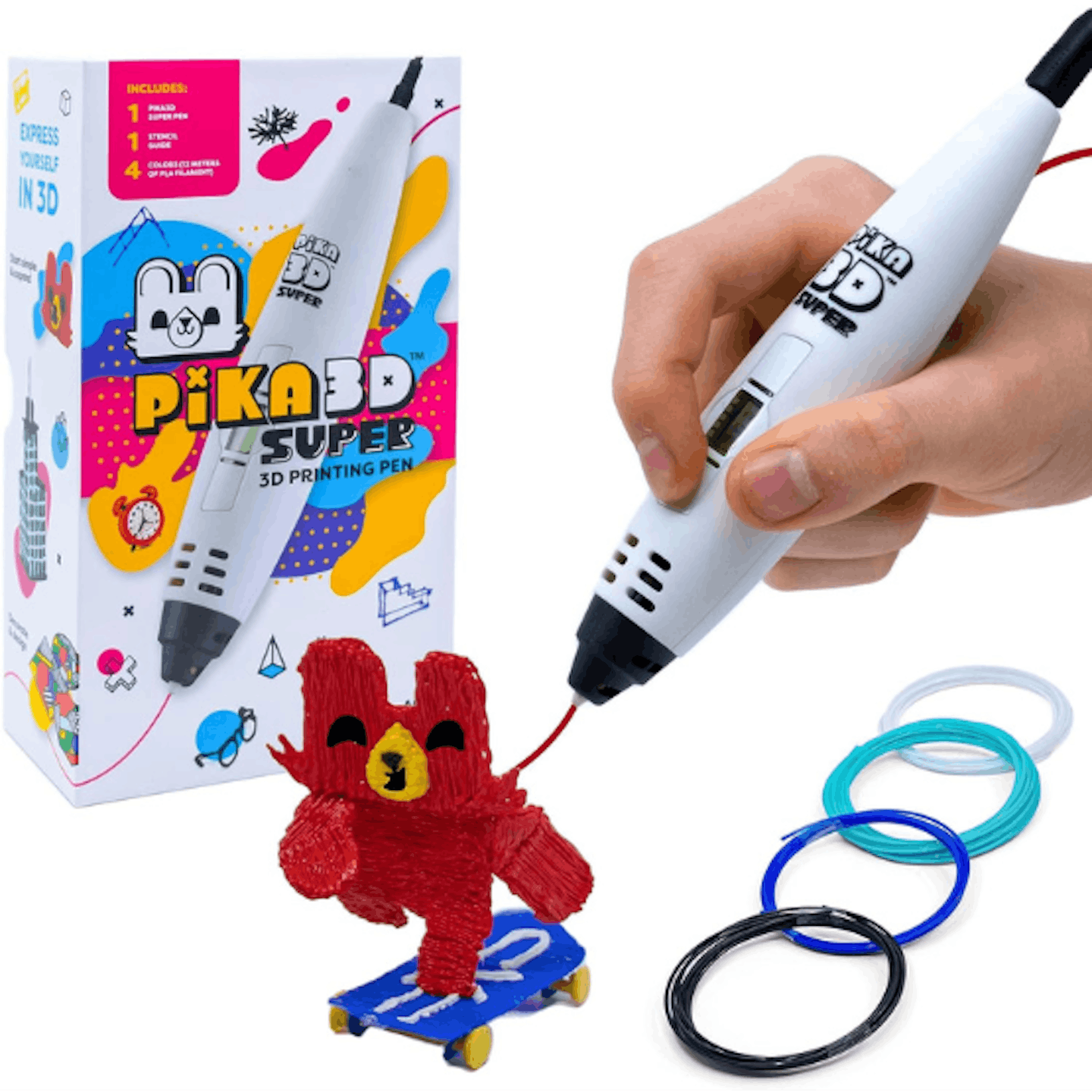
The Pika Super is lightweight and compact which makes it ideal for kids. It includes 4 coloured filaments, plus a step-by-step guide and stencil. This is a great pen for you to plug in and watch as your little one invents and creates.
Diana, a reviewer, said: "My 6 year old grandson was able to make glasses and a sword easily. He uses it with ease."
Pros
- Lightweight and compact
- Includes 4 coloured filaments
Cons
- The tip of the pen gets hot
| Suitable for: | 14 years + |
| Weight: | 181g |
| Warranty: | Not stated |
- Lightweight and compact
- Includes 4 coloured filaments
- Includes step-by-step guide and stencil
Best 3D pen for kids gift set
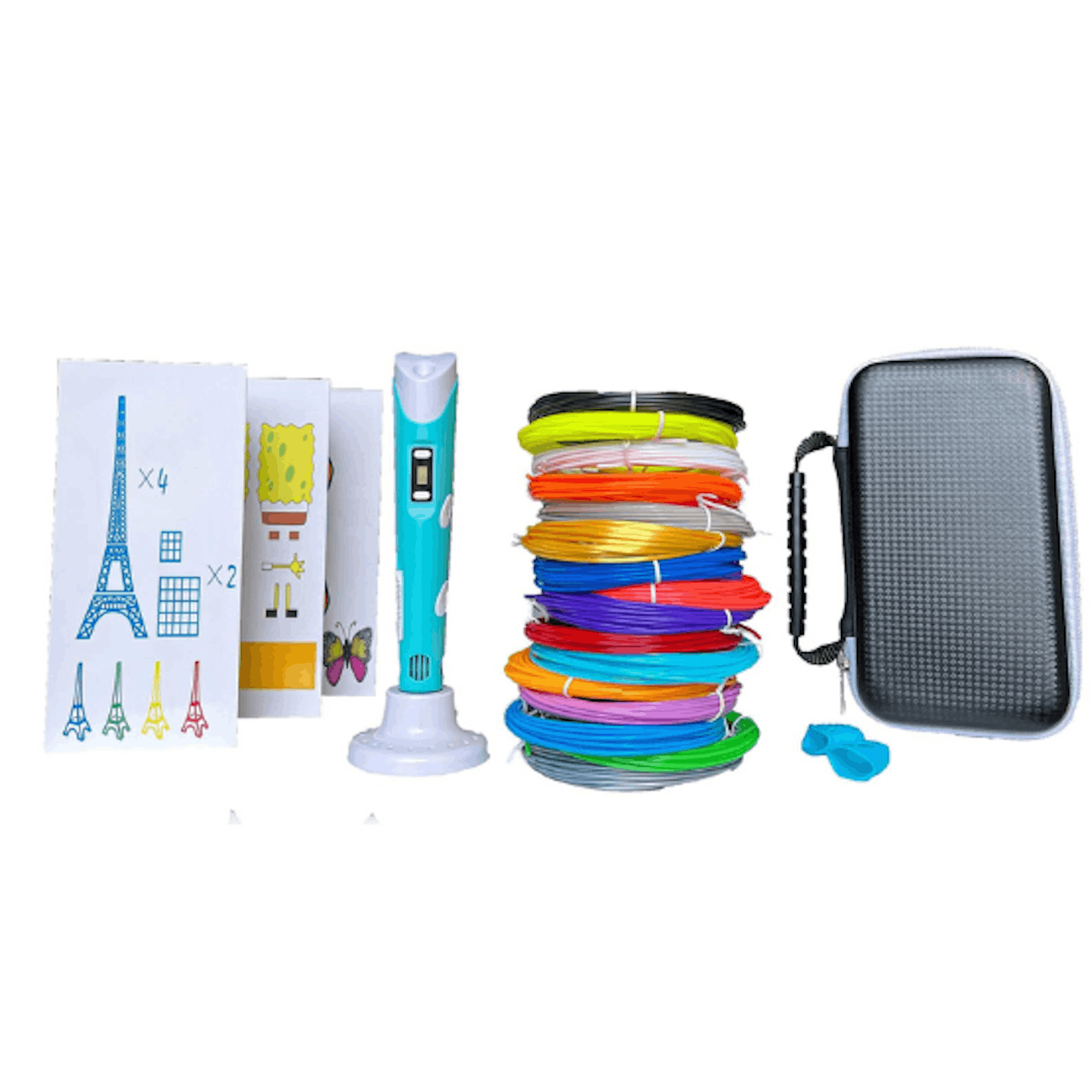
www.etsy.com
This 3D pen gift set is the perfect present for any budding artist or engineer. The set includes a pen holder, design sketchbook mat, large silicone pad with shaped animals and figures, finger protection and over 20 colours of filament refill. There is also a drawing book with over 40 pages of templates to copy using the transparent paper.
Reviewer, Ella, said: "My kids love this. Comes with everything you need and there’s lots of filament to use. The sketchbook is also quite handy to get them started."
Pros
- Complete starter kit
- Can adjust temperature and speed
Cons
- Suggested to remove unused filament after us
| Suitable for: | Not stated |
| Compatible with: | PLA filaments |
- Includes 20 coloured filaments
- Includes pen holder and sketch book
- Includes finger protection
- Compatible with PLA and ABS filaments
- Can control the speed of flow
Best 3D pen for kids refills
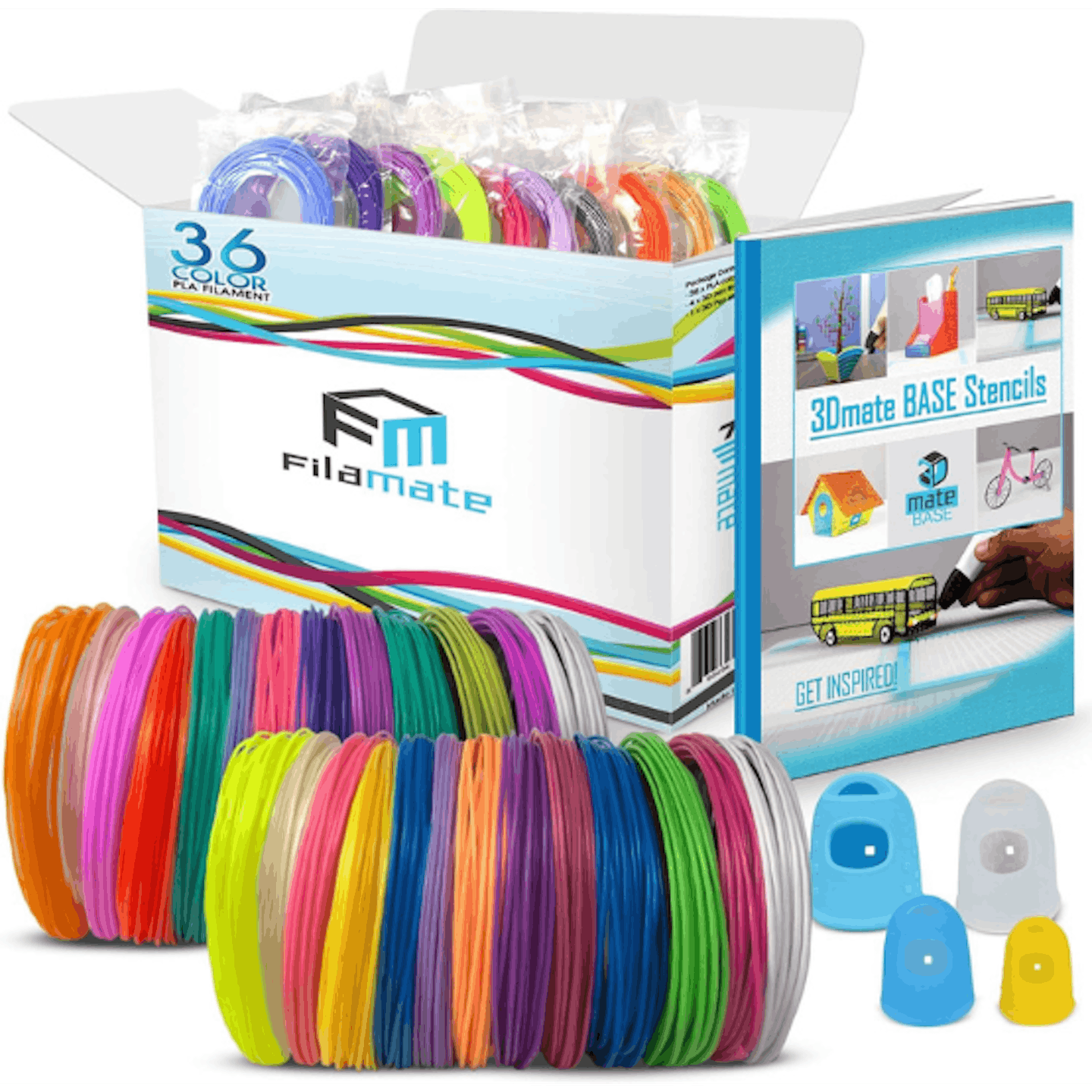
If your little one loves their 3D pen but keeps running out of filament, then this refill pack will keep them doodling for ages. It includes 36 of the most popular colours of PLA filament, which is both eco-friendly and safer for kids. Plus it is compatible with most 3D pens.
One reviewer added: "Santa got some major points for delivering such a great surprise. You do need tons of filament."
Pros
- 36 popular colours
- Eco-friendly PLA filaments
Cons
- Not compatible with 3D Doodler
| Number of colours: | 36 |
| Filament diameter: | 1.75mm |
| Overall roll length: | 10ft |
- 36 colours
- Includes 4 finger protectors
- Eco-friendly
- Compatible with most 3D pens
Is a 3D pen safe for kids?
3D pens are safe for children to use, but for younger children they should be used under supervision. 3D pens use heat to melt the plastic and so there is a risk that children could touch a hot part of the pen. Many 3D pens for kids have tips which don't heat up, but best to be cautious and advise your child not to touch the tip of the pen. There are also finger protectors available which children can wear when using a 3D pen.
Some 3D pens can only be used when plugged into the mains and therefore have a wire attached. Always make sure your child is supervised when using a device plugged into the mains electric, and with a wire and be aware of child safety for cords.
For safety, an auto-turn off feature is available on many 3D pens for kids which means if your little ones leaves them laying down while still plugged in they won't burn through your table, or floor, or paper because they will turn off when not in use. You can also purchase pen stands to place your pen in between uses.
The filaments cool and harden quickly and so it is unlikely they could burn a child, but it is best to be cautious and advise your little one not to touch the plastic until it has hardened.
What is the best 3D pen for kids?
3D pens are popular with kids and adults alike. In fact, they are popular in many professions, in particular engineering and architecture. However, some pens have many functions and might be overly complicated. The best 3D pens for kids obviously depends on your little one's age, but it is best to keep it simple to avoid frustration. Also consider safety. Children might prefer a wireless pen so the cord doesn't restrict them, and also choose a 3D pen with a nib that remains cool when in use.
What is the best age for a 3D pen?
The 3Doodler pen advises that 6 years and over is the best age to introduce a 3D pen, while other brands suggest from age 5, or even as old as 14. However, you know your little one and their capabilities best, and like all craft activities for toddlers if it is something you think they will enjoy, as long as they are supervised, you can give it a try. There is no upper age limit, 3D pens are popular with older children, teenagers and adults.
Do all 3D pens use the same filament?
It is always best to read the requirements for the specific pen you have bought, but generally most 3D pens use the same 1.75 mm PLA or ABS filaments. Some brands, namely the 3Doodler pens, use special low temperature plastic which is 2.5 or 3mm filament and is safer for children to use.
3D pens use either PLA or ABS filament which are considered safe plastics for kids. In fact ABS plastic is the same plastic used to make lego and PLA plastic is non-toxic and can be recycled so it is a more eco friendly option. Most 3D pens include a small supply of filament to get you started and then you can buy refill packs compatible with your particular pen.
Laura Healy is a Commercial Content Writer for Mother&Baby. She is a mum-of-two girls and loves writing about all things parenting, she is particularly interested in the toddler years and eco-friendly baby products, as well as children’s literature. She has a PhD in Creative Writing and has published short stories in the UK and Ireland, as well as previously writing freelance for her local paper.
